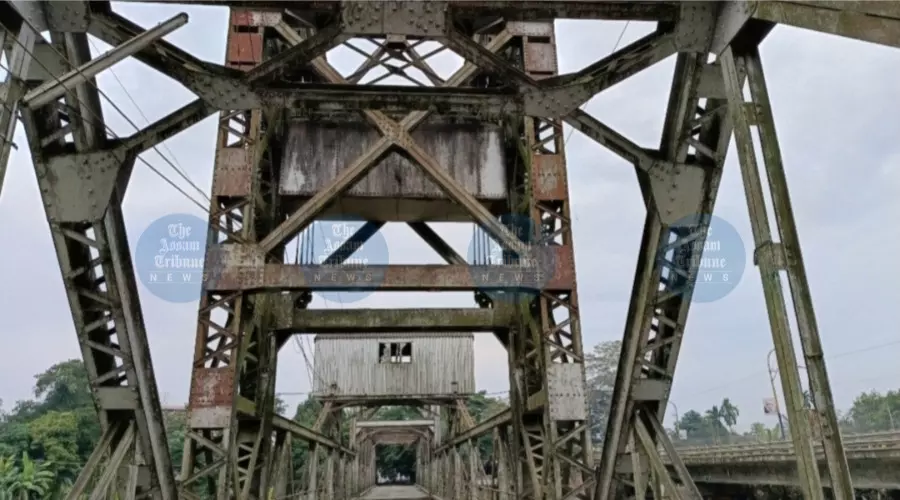Colonial relic or rusting risk? Sivasagar’s 90-yr-old Dikhow bridge’s fate hang in balance
Some seek its restoration to attract tourists & regulate traffic, while others seek its demolition as it has outlived its lifespan

Nazira, July 9: The British-era vertical-lift bridge over the river Dikhow in Sivasagar district has, of late, generated an animated debate on whether the bridge should be preserved or demolished. There are people who think the bridge needs restoration. But there are also calls for the bridge to be dismantled.
A controversy surrounding the colonial-era bridge in Sivasagar has been going on for quite some time. However, Chief Minister Himanta Biswa Sarma’s recent visit to Sivasagar gave a fresh impetus to the controversy, with some local citizens placing before him their demand for demolition of the vertical-lift bridge. However, Leader of the Opposition in the State Assembly, Debabrata Saikia, wrote a letter to the Chief Minister, demanding restoration of the bridge.
Though there has been a lot of controversy over the British-era Dikhow Bridge in Sivasagar, it is the government that will take the final call on the issue. And this is where the role of pressure groups comes into play. If the bridge is rebuilt keeping its original structure intact, Sivasagar town will, for sure, have an added attraction as a tourist destination.
The old Dikhow Bridge, as it is generally known today, is in urgent need of repair, a demand that some organisations have been raising for years. Located on AT Road in Sivasagar town, it is a 90-year-old bridge with a steel structure and screw pile foundation, which was built by Braithwaite and Co (India) Ltd, Calcutta (Kolkata), during the British Raj. Work on the bridge started in 1925 and was completed in 1935.
The Dikhow steel bridge is 159 metres long, 4.88 metres wide, and 4.5 metres above the river.
The Assam Company (1839-1953), headquartered at Nazira in Sivasagar district, transported tea to Kolkata, formerly Calcutta, by vessels via the river Dikhow. Another purpose behind construction of the bridge was to improve the transportation network between several regions and facilitate movement of agricultural produce from rural areas to urban markets.
The Dikhow Bridge is unique in the sense that its mid-span, which is inoperative now, could be lifted to let ships pass underneath through the river.
There are concerns that the old Dikhow ridge, which has already outlived its usefulness, may collapse at any time. Official sources say that around 2005-2006, the State PWD had received a letter from Braithwaite and Co Ltd that stated that the Dikhow Bridge had already outlasted its lifespan.
With the passage of time, wear and tear and corrosion have severely affected the steel structure. The trough deck, moveable span, and ropes of the lifting arrangement of the bridge have rusted away. The piers and cross girders of the bridge have also got damaged.
According to State PWRD sources, the old Dikhow Bridge can be restored and beautified by maintaining the original design and architectural elements; aesthetically illuminating the structure at night; landscaping the area where the bridge stands with walking paths and viewing platforms for tourists; and by making arrangements of photography and fishing points.
Reopening the Dikhow Bridge for small vehicles and pedestrians will also significantly help regulate traffic and further promote tourism in Sivasagar.
The vertical-lift steel bridge over the river Dikhow stands as a testament to the engineering marvel of the colonial era. Its architectural splendour, historical importance, and functional role in connecting communities make it a significant landmark in the history of Assam. The bridge continues to serve as a symbol of pride for local inhabitants, while its heritage value attracts visitors from far and wide.
- By Siba Gogoi
